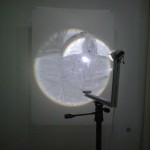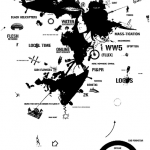Seth Riskin
PhD candidate at the Planetary Collegium, CAiiA Hub, School of Art & Media, University of Plymouth
Director of the MIT Museum Studio
The Physical Semantics of Light (2015)
Light as a subject of thought has proved to be impossible to deal with
holistically. Light is intrinsic to the furthest levels of physics, visual art,
philosophy, psychology, etc. The mental structures to deal with light have been
quite complex through time, cultures and disciplines, pushing against such
boundaries. The concept of light embodies many semantic and conceptual
contradictions and paradoxes, e. g., light operates in space and time which are
themselves functions of light.
I want to explore and present these contradictions in a manner by which they
may be more fully apprehended and communicated. I intend to use physical
light to reveal metaphors of light and their relationships. Combining textual
descriptions of light with optical light, physical materials, space and time will
allow me to address metaphors of light experientially and theoretically at once.
I will use text and associated concepts in ways that subject them to the same
potentials of simultaneity, spatiotemporality, etc. that light itself affords. The
research aims at combined intellectual and artistic development and
communication. It will be practice-based, resulting in a body-scale structure, or
structures (e. g., made of transparent or translucent materials, optical light and
text) that simultaneously constitutes a form of writing and physical creation,
ie., “physical semantics” of light using light
info:www.i-node.org







